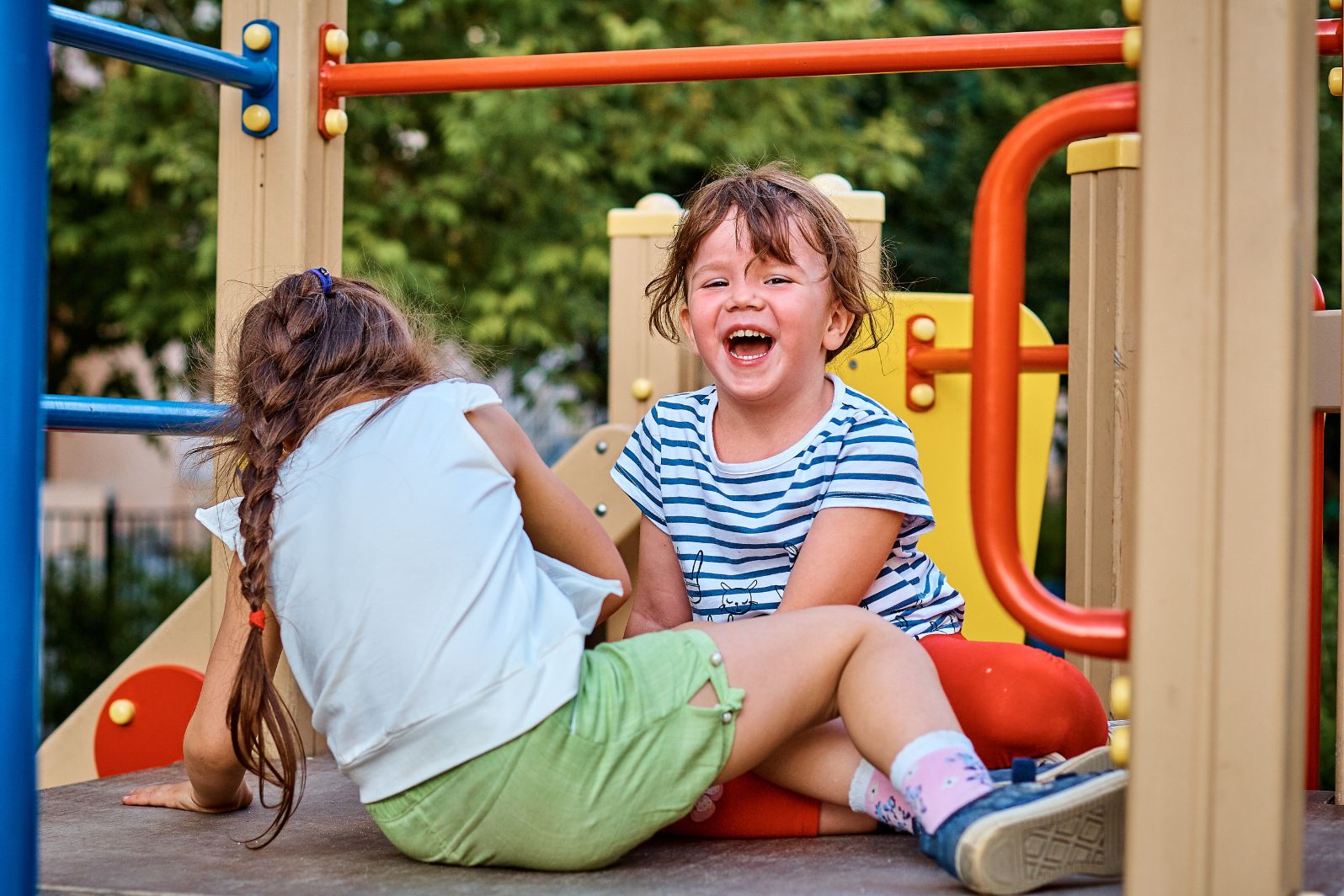Playgrounds are spaces that nurture their childhood. They are the result of an exciting collaborative journey between landscape architects, playground builders, child psychologists, and community members. It is a creative process that involves research, imagination, and planning. Thus, the commitment of the diverse stakeholders is paramount to creating a harmonious and nature-infused play space that encourages exploration, creativity, and connection with the natural world.
Inception and Vision
The journey of crafting a nature-themed playground commences with inception and vision. It is at this point that a collective vision takes root, often sparked by the aspirations of a community, educational institution, or organization. Stakeholders come together, inspired by a common goal – to create a captivating outdoor space that resonates with the essence of nature. During this collaborative brainstorming phase, ideas flow freely, fueled by a desire to cultivate an environment that fosters not only play but also imagination and education. These initial discussions establish the tone for the forthcoming design process.
Collaborative Team
At the heart of designing a nature-themed playground lies the assembly of a diverse and multidisciplinary team. This collaborative effort involves bringing together individuals with varied expertise, including playground builders, educators, child psychologists, and engaged community members. Each team member contributes a distinctive perspective, harnessing their specialized knowledge to enrich the design process. Playground builders give shape to the design, educators infuse elements of learning and exploration, while child psychologists provide insights into child development and play behavior.
Site Assessment and Planning
This phase entails a comprehensive evaluation of the site’s intrinsic characteristics, including its topography and existing flora. Collaborators try to understand how the natural environment can be seamlessly integrated, aiming to preserve and enhance the inherent beauty of the location. Factors like the gentle contours of the land, the positioning of trees, and the presence of water features are carefully studied to harmonize with the playground’s envisioned theme. Design considerations extend beyond aesthetics, encompassing critical aspects such as accessibility, safety, and visibility. Collaborators formulate a layout that ensures inclusivity for children of varying abilities, minimizing potential hazards, and providing unobstructed lines of sight for caregivers.
Nature-Inspired Features
At the heart of designing a captivating nature-themed playground lies the imaginative exploration of nature-inspired features. Collaborators converge to brainstorm and infuse the play space with elements drawn from the natural world. From enchanting treehouses nestled among branches to rugged boulders that invite climbing adventures, every feature is carefully considered to reflect the essence of nature.
Water elements, such as gentle streams or cascading fountains, are conceived to evoke the soothing sounds of nature, fostering a sense of tranquility and exploration. Native plants are purposefully incorporated to introduce children to the diverse flora of their surroundings. Central to these discussions is the notion of sensory engagement and imaginative play. Collaborators delve into how these features can stimulate the senses, encouraging children to touch, see, hear, and even smell the surrounding elements. The objective is to kindle a deep connection to nature.
Inclusivity and Accessibility
A paramount focus is made on ensuring inclusivity and accessibility for all children. Collaborators place a premium on creating an environment where every child, regardless of their abilities, can fully engage and participate in the joys of play. Discussions revolve around thoughtfully designing pathways that facilitate easy movement for children with mobility challenges. Play areas are envisioned to accommodate various play styles and physical abilities, providing opportunities for social interaction and shared experiences. Moreover, sensory-rich spaces are meticulously planned, offering tactile, auditory, and visual stimuli that cater to diverse sensory preferences. Collaborators deliberate on the placement of interactive elements that can be easily accessed by children of different heights and reach capabilities, fostering a sense of equality and engagement.
Safety and Regulation
Upholding stringent safety standards and adhering to regulations is primarily looked after. Collaborators engage in thorough discussions to establish a secure play environment that safeguards the well-being of children. They consider factors such as selecting soft ground surfaces to cushion falls, determining appropriate heights for various play elements, and ensuring that equipment is durable and free from hazards. By scrutinizing safety guidelines and regulations, a commitment to providing a secure yet engaging playground is established.
Material Selection
The careful exploration of materials is driven by a dual objective: to harmonize with the playground’s nature-inspired theme while minimizing its ecological footprint. Discussions are held about sourcing eco-friendly and sustainable materials that resonate with the principles of nature and environmental stewardship. Options such as reclaimed wood, recycled plastics, and natural fibers are explored, as they contribute to a reduced carbon footprint and a diminished impact on the planet.
Playground Prototyping
As the journey of designing unfolds, the transition from conceptualization to tangibility is marked by the crucial phase of playground prototyping, offering stakeholders an opportunity to witness their visions materialize and refine the evolving concept. This prototyping process acts as a bridge between imagination and reality, providing an interactive platform for discussions and adjustments. Visualizing the design through prototypes empowers stakeholders to make informed decisions, fine-tuning aspects such as play structures, pathways, and sensory-rich zones.
The Bottom Line
The collaborative journey of designing a nature playground is both fulfilling and testing. It involves numerous stakeholders, including the children, the community, the environment, and the design team. Each stakeholder assumes a significant part in the planning cycle, and it is critical to guarantee that their needs and preferences are thought about. By involving all of them, it is possible to create a unique and engaging nature playground that is both instructive and pleasant for the children.



